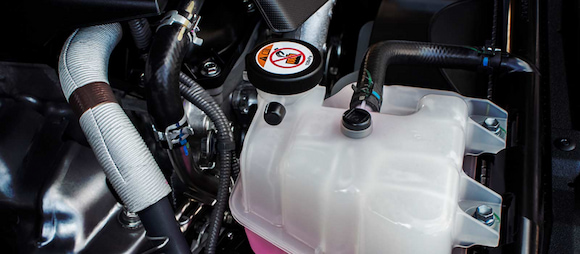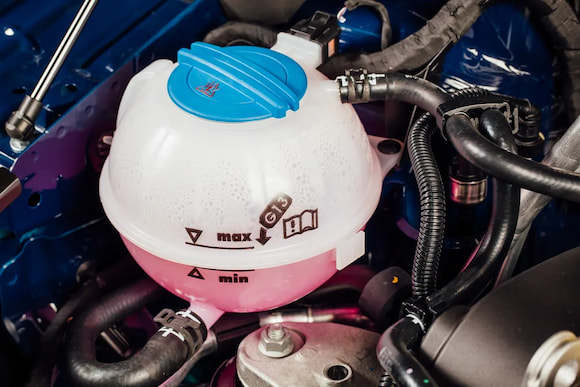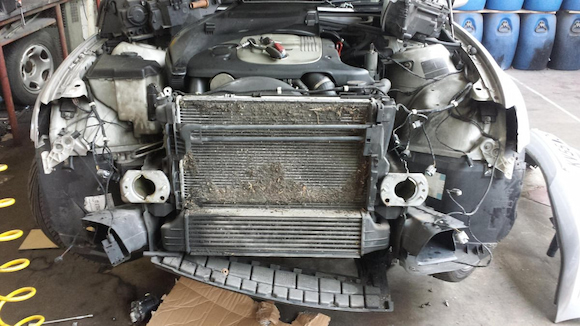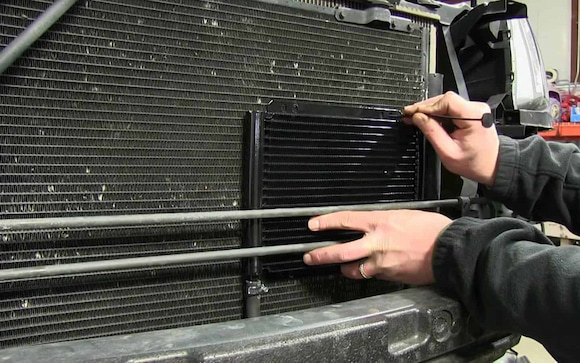Have you ever considered just how hot your car’s engine typically gets in the summer? Would you be surprised to learn that only under modest load, an operating temperature of 120°C isn’t unusual? And even that’s merely a drop in the bucket compared to the 2,500°C gases pulsing through its combustion chambers every cycle.
Of course, it’s no secret that internal combustion engines generate massive amounts of heat, but it’s difficult to comprehend all the aspects of that heat generation. The irony is that in the thermodynamic sense, more than half of the heat being generated is actually waste, an unwanted by-product of combustion. It’s precisely because it’s unwanted that it can’t be taken lightly.
These are temperatures where, if left unchecked, head gaskets will blow, and cylinder heads and even engine blocks can expand to the point of seizing. Ultimately, this “waste heat” needs to be disposed of as quickly as possible. Fortunately, heat transfer is one of the things engines do very well.
The Basics Of Cooling
The liquid coolant that’s pumped through an engine’s water jacket is its primary means of heat transfer. In order for that transfer to take place though, the coolant has to be circulated, under pressure, out of the engine and exchanged with fresh air. This is where your reliable auto cooling system comes in. The bulk of the responsibility for performing that heat exchange falls squarely to your radiator.
Radiators take the engine’s near boiling coolant, cool it, and return it to the engine. It’s a perpetual cycle of liquid cooling that’s simple and effective, but it’s much more than just cooling. It’s about regulating the effect that high temperatures have on an engine’s efficiency, economy, and ultimately, how much power it’s capable of producing.
In short, engines need stable temperatures to perform at their best; Not too hot and not too cold. So, let’s take a close look at the radiator itself, what supports it, and consider how these car cooling system components contribute to keeping performance optimized.
The Radiator Rundown
Radiators are constructed from a core of narrow aluminium tubes, and are joined together by either copper alloy or aluminium fins that effectively increase their cooling area. A complete core assembly is sandwiched between two tanks: one providing a reservoir for the heated coolant coming from the engine, and the other providing a reservoir for cooled liquid being pumped back into the engine. There are two types of radiator configurations for these tanks:
· Downflow Radiators
The tanks in downflow radiators are positioned horizontally across the top and bottom of the core, with the heated coolant circulating from the high-pressure top tank down to the low-pressure bottom. These types of radiators are typically found on older cars, as well as cars with horizontal grille patterns. They’re largely limited in cooling capacity though by both height and width restrictions.
· Crossflow Radiators
The tanks on crossflow radiators are positioned vertically along the sides of the core, with the heated coolant circulating horizontally through the unit. These types of radiators are common in newer cars. All things being equal, either type of radiator is capable of performing just as well as the other. Where space allows, however, crossflow radiators are generally regarded as the better alternative for the following reasons:
· The larger frontal areas in modern cars allow for larger, wider-cored units to be built;
· Coolant inherently flows slower horizontally than vertically allowing for more time to cool; and,
· Depending on the number of rows of tubes, coolant can pass multiple times through the core before returning to the engine.
There’s one point where there’s no dispute about where crossflows have an advantage, though. By default, their pressure caps (sometimes referred to as filler caps) don’t need to be placed on the high-pressure, inlet tank at the top of the radiator. They can be placed on the low-pressure out at the side of the radiator where there’s less chance of coolant loss due to overheating.
Cool Fans
Engine driven, and independently driven and mounted cooling fans are a key component in ensuring that a continuous supply of fresh air is always being drawn across the radiator’s core. Fans are typically shrouded to funnel the flow of air over the entire surface area of the radiator, and there are three main types:
· Direct Drive Fans
These fans are driven directly off of the water pump by the engine’s crankshaft, and rotate at the exact same speed the engine is rotating at, regardless of the temperature.
· Clutch Drive Fans
Thermal and non-thermal viscous clutch assembly fans are also installed off of the water pump, but the fan’s rotation is regulated by the engine’s thermostatic temperature or variably by the speed it’s rotating at.
· Electric Fans
Electric fans aren’t physically connected in any way to the engine, and are activated either by temperature sensors or the driver.
Fans are designed to maximize airflow while minimizing any power-robbing drawn on the engine. For reasons of all-around drivability and efficiency, direct drive fans have largely fallen out of use on modern cars in favour of clutch-driven, or electric fans.
A special type of direct fan, called a flex fan with blades that adjust according to engine rpm, is sometimes used as a low-resistance replacement for clutch fans, but these fans require the installation of a secondary spacer to fully optimize their airflow.
Transmission Cooling
Very often, the radiators installed in vehicles with automatic transmissions will also have a separate transmission cooler built into the unit as well. Automatic transmission temperatures can also reach 100° under load, so radiators with integrated oil-coolers are designed to:
· Put the large envelope of the engine cooling core to use;
· Make double use of the engine’s cooling fan for the benefit of the transmission; and,
· Eliminate the need to install an auxiliary transmission cooler that could restrict airflow to the radiator.
Built-in transmission coolers can be identified by the presence of oil-cooler lines attached to a radiator. Ideally, if you always want to be sure that if for any reason you need to repair, or wish to replace one of these radiators with a higher flowing one, check that it’s also suitable for your transmission’s needs as well.
The Final Word
At the end of the day, keeping your engine running at the optimal temperature is more important than just keeping it as cool as possible. After all, you need heat for combustion, but you also need an auto cooling system to ensure that heat doesn’t become an inhibitor to efficiency.
If you’re thinking about replacing or increasing the capacity of your car’s radiator, make sure you consider all the aspects of cooling. With the right choices, you can be certain that your engine will continue to last you a long time.




